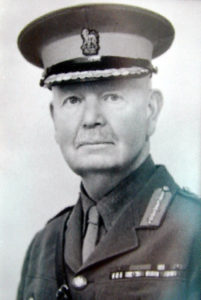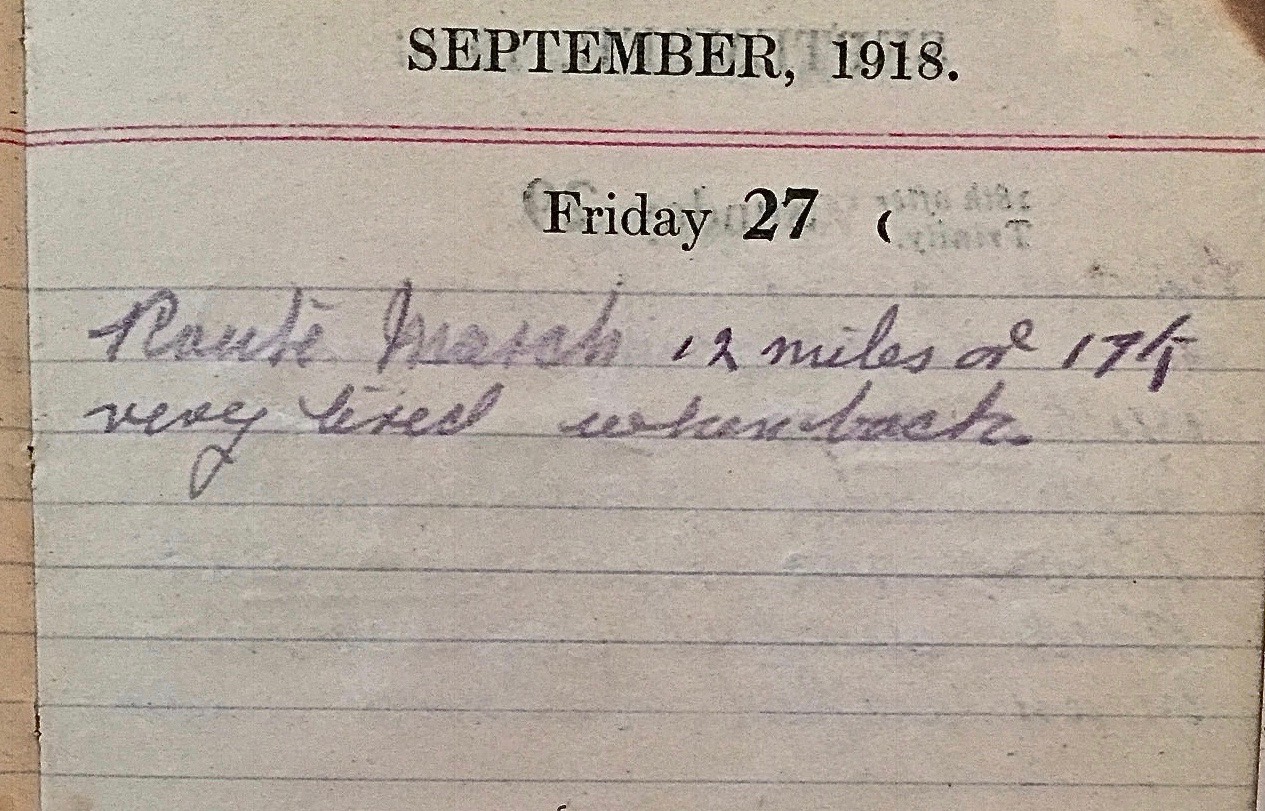Friday September 27th, 1918
Route march 12 miles or 17km. Very tired when back.
Operation Order No 3
Operation Order No 3 has been issued. It provides instruction for the 9th’s move tomorrow from the First Army Area to the Fourth Army Area. The journey will start with a march to Tincques Station and the Band will once again be positioned in the middle of the parade. Some of its other instructions are as follows:

‘Dress – Full marching orders, water bottles filled. Helmets and ground sheets on packs. Mugs are not to be carried on the outside of packs or haversacks.’
‘Rations – The meat and potatoes for tomorrow’s rations will be cooked tonight, issued to the men and placed in canteens for consumption on the train. Remaining rations – rice etc – will be carried on the lorries. Rations for Sunday will be issued on arrival at New Billets.’
‘Pioneers, Shoemakers, Tailors and all HQ employees, less loaders, will march with Bn.’
‘On arrival at Tincques Station men will be entrained, placing their kits in the trucks, Platoons will then fall in and fill water bottles. No man is allowed to leave the station on any pretext whatsoever, but must remain at his truck on the train.’
The photograph shows a cobbler of the 1st Newfoundland Regiment of the Canadian Expeditionary Force. He is working at Berneville during the Battle of Arras, April/May 1917, just after the regiment has retired from Monchy-le-Preux.^
Shoemakers & Tailors

Shoemakers and tailors, together with other tradesmen, were members of Employment Companies at Divisional, Corps HQ, Army Areas and on the LOC. There were a handful in each of these companies. ¹ It is unclear to me which shoemakers and tailors are being referred to in the Operation Order – I haven’t been able to find any evidence that there were either roles in the 9th Bn. Any insights gratefully received.
In desperate times, these tradesman also fought, as evidenced on March 27th, 1918:
‘During the afternoon Brigadier-General Grogan, with two battalions and a number of details, including the Pipe Band, Drums, Tailors, Shoemakers and Storemen of the Battalion made a most successful counter-attack and re-took Harbonnieres and Vauvillers.’²
For this action, Brigadier-General George Grogan received a Bar to his DSO. Within two months, for his bravery and leadership at the Third Battle of the Aisle, he would also be awarded the Victoria Cross.³
9th Battalion War Diary – 27th September 1918 – Manin
Battalion paraded for Brigade Route March. Operation Order No 3 (Appendix No 8) issued.
References & Further Reading
¹ ‘No Labour, No Battle: Military Labour During the First World War’ by John Starling & Ivor Lee, The History Press, 2014, section on Divisional Employment Companies
² ‘The Diehards on the Western Front’ (Volume 2) by Everard Wyrall (Middlesex Regiment), extract from war diary in account of actions of March 27th, 1918
³ Brigadier-General Grogan on Wikipedia
^ Q 5338, copyright Imperial War Museums
* image of Brigadier General Grogan, public domain, source Wikimedia Commons


